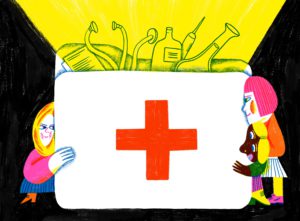
Description
The Foresight model is designed to provide strategic displacement forecasts along with scenario analysis to provide accurate forecasts of the total number of forced displacements from a given country 1-3 years into the future.
Context
Foresight was established by the Danish Refugee Council and IBM to significantly scale-up capacities of predictive analytics in the humanitarian sector. The aim was designed to enhance the accuracy of scenario-building and forward looking-analysis to ensure better strategic planning in the humanitarian sector and thus improved outcomes for vulnerable populations.
Technical details & Operations
The model is based on a theoretical framework focusing on the root causes or pre-disposing factors of displacement. The different dimensions and associated indicators have been grouped into 5 categories:
- Economy (e.g. unemployment, GDP, poverty)
- Violence (e.g. civilian fatalities, number of conflict events, etc.)
- Governance (e.g. corruption, access to public services, democracy, etc.)
- Environment (e.g. food security, natural hazard events, etc.)
- Social/population (e.g. presence of vulnerable groups, urbanization, population size)
The categories were identified based on DRC experience in the field, as well as adopting standard groupings used to describe fragility e.g. by the OECD, State Fragility Index etc.
The data is all derived from open source data and from the monitoring program over 25 years old run by the DRC through which thousands of migrants on the move are interviewed. The main data sources are the World Bank development indicators, ACLED, UCDP, EMDAT, UN agencies (UNHCR, WFP, FAO), IDMC, etc. In total, the system aggregates data from 18 sources, and contains 148 indicators. The machine learning model employed is an Ensemble. An ensemble model works by leveraging several constituent models to generate independent forecasts that are then aggregated. Here is employed two gradient boosted trees are employed to generate the point forecasts. The model hyperparameters were determined by means of a grid search. Each year-ahead forecast has a separate model. In other words, we train a set of Ensemble models for y(t + h) = f(x(t)), where h = 0, 1, 2, 3. The associated confidence intervals were generated by empirical bootstrap method, where the source error distributions were generated on a retrospective analysis. Model training data was limited to data since 1995 and based on this training the data, the model is able to learn and understand how the different indicators relate to displacement and use this in forecasting how future displacement will evolve.
Deployment & Impact
The model now covers 26 different displacement-producing countries. The model can predict next years displacement with an average margin of error of down to 6% in the country where it performs best on average (Guatemala). Of the more than 150 forecasts made so far across the 26 countries, approximately 50% have a margin of error of 10% or below and 2/3 have 15% or below. The model generally outperforms the accuracy of the planning figures being used in Humanitarian Response Plans.
The model has so far been used in the Danish Refugee Council (DRC) annual strategic planning cycle. This includes providing country offices with forecasts of displacement to inform the contextual analysis, as well as scenario-based forecasts of how displacement can potentially unfold. This helps DRC in being better prepared for contextual developments and engage in mitigation efforts. DRC is further exploring the potential of linking Foresight with an anticipatory financing mechanism.
It has also been used by external partners to inform strategic planning. For example, the model has been used in HNO process for Central America, as well as been used by OCHA CERF in funding allocation decision-making.
The model is hosted on an online platform, where it is possible to access the underlying data, see the forecasts for the different countries and develop scenario-based forecasts of displacement.





